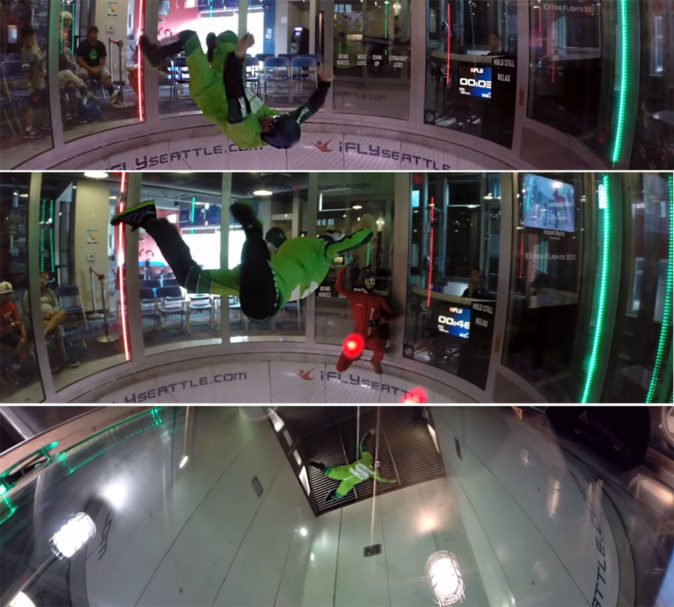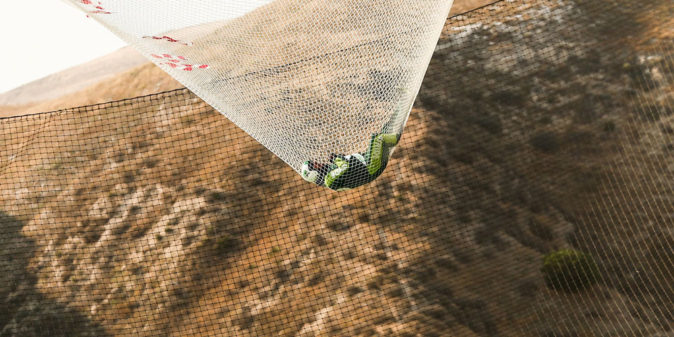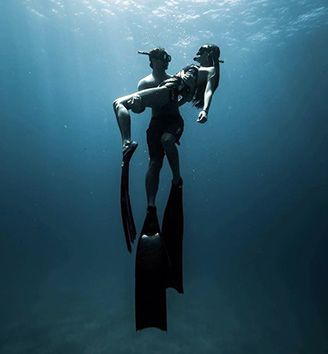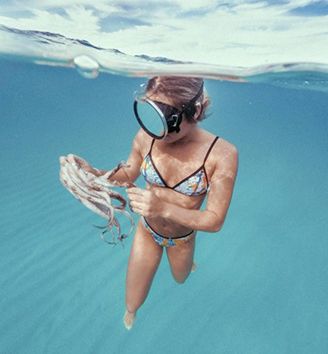Luke Aikins can truly be called the first real skydiver. On July 30, 2016, he performed the first-ever unassisted parachute-free jump from nearly 8 kilometers in freefall.
With 18,000 jumps under his belt and a stunt school in Los Angeles (Luke was one of the stunt coordinators for “Iron Man 3”), his family legacy spans three generations of skydivers. It is worth noting that Luke initially refused when the idea of a parachute-free jump was proposed, but he couldn’t sleep for two weeks, ultimately deciding to accept the challenge.
Video of the Jump
Preparing for the Parachute-Free Jump
Preparation for the jump took over two years, and this achievement can be seen as the pinnacle of a professional’s career—he flawlessly executed what once seemed impossible.
It was impossible to control and rehearse every aspect of the stunt. Factors like wind, pressure, the net’s reaction to a falling body, and many other unpredictable variables meant that even the slightest deviation from the plan couldn’t be accurately calculated or accounted for.
In a video recorded from the cockpit, Luke notes: “A great deal of attention is given to the upcoming filming process of the jump and production, fitness, and training. All of this gives me confidence, but it doesn’t guarantee I’ll survive. Most importantly, constant, endless practice is needed. If I miss the target, it won’t matter how good of shape I’m in or how well the filming crew did their job. The only thing that matters is the target.”
Luke had to battle the wind. He needed to tumble continuously in the air for about 60 meters of descent, reaching speeds of around 50 m/s (during the jump, his speed was even higher—70 m/s). Then, just a second before landing, he had to flip onto his back. Training for the proper fall was conducted in a wind tunnel.
Luke Aikins speaks warmly about his team of stunt professionals who went through this arduous journey with him: “We were practically married during the last five days of preparation.”
During practice jumps, Luke had to remain precisely above a 9x9 meter patch of ground. If the skydiver changed the angle of descent and deviated from the trajectory, special signal lights changed color, and optical instruments detected these deviations.
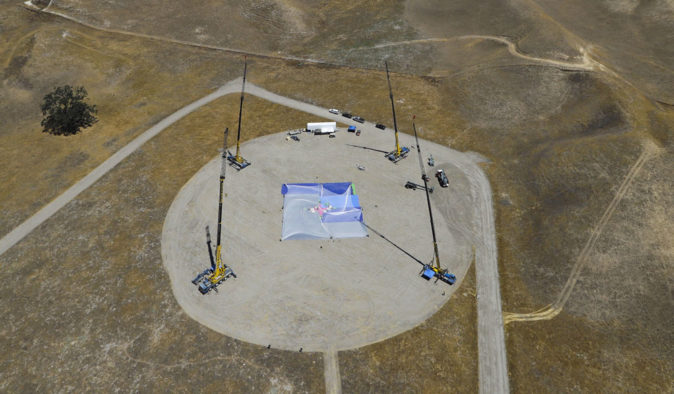 Net and Four Cranes, 20 Stories Tall.
Net and Four Cranes, 20 Stories Tall.
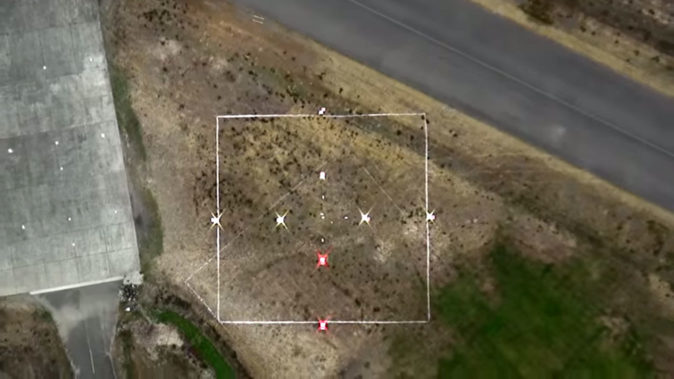 Targeting Signaling System for the Flight.
Targeting Signaling System for the Flight.
Of course, training in a wind tunnel under near-ideal conditions made it relatively easy to stay over the target—no wind from various directions or pressure changes. But in the field, conditions were far more challenging, so Luke had to complete at least six practice jumps per day above an improvised target.
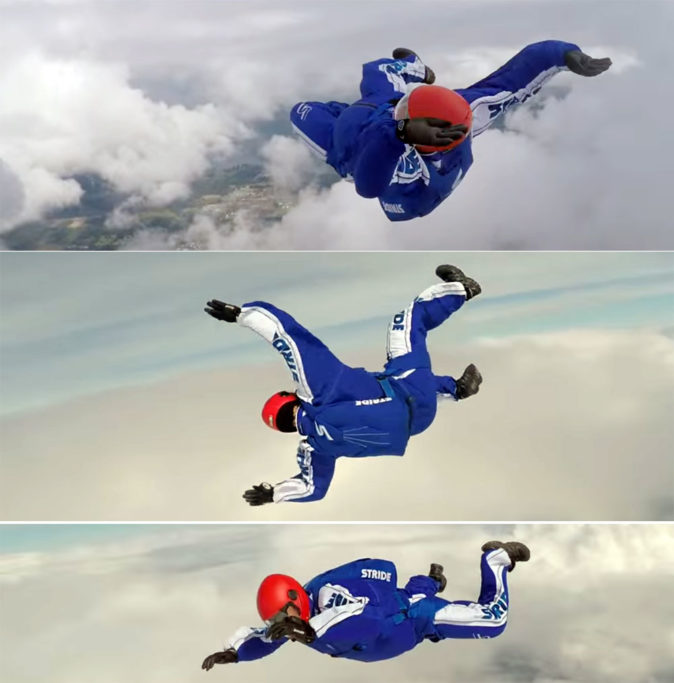 Practicing Turns for the Parachute-Free Jump
Practicing Turns for the Parachute-Free Jump
The practice jumps before the actual extreme skydive were done using a parachute, meaning the most critical moment couldn’t be rehearsed until the long-awaited July 30.
A Day in the Life of Luke Aikins’ Training
The skydiver declined to wear a safety parachute because the extra weight of the equipment would create additional strain on the net and could injure his back. His helmet was equipped with a camera and a GPS tracker that regularly signaled when specific checkpoints were reached along the route.
In Freefall
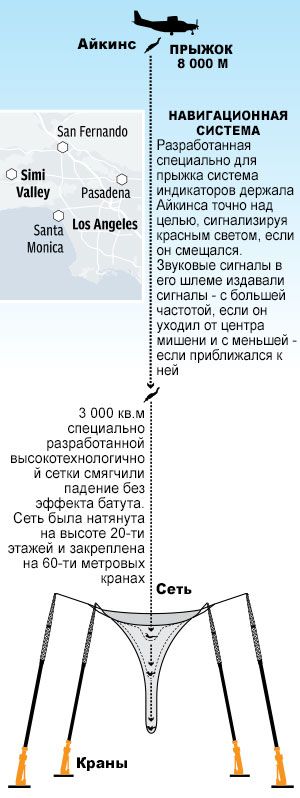 Diagram of Luke Aikins' Jump
The first 3 kilometers of freefall required assistance from others—three parachutists helped manage his discarded oxygen tanks, with one filming the jump and another releasing a special signal smoke so the audience on the ground could follow the descent. At 1500 meters, the assistants deployed their parachutes and left Aikins to continue alone. The freefall lasted just over two minutes.
Diagram of Luke Aikins' Jump
The first 3 kilometers of freefall required assistance from others—three parachutists helped manage his discarded oxygen tanks, with one filming the jump and another releasing a special signal smoke so the audience on the ground could follow the descent. At 1500 meters, the assistants deployed their parachutes and left Aikins to continue alone. The freefall lasted just over two minutes.
The historic stunt was executed perfectly, with the landing almost directly in the center of the target. Within a few minutes of landing, Aikins was already embracing his wife and young son.
This jump is a quintessence of engineering ingenuity, obsession, inspiration, and determination. Eighteen months of preparation and the coordinated efforts of hundreds of professionals culminated in a breathtaking result—this event became one of the most inspiring moments in the history of extreme sports. The first words of Luke Aikins after landing were, “I was practically levitating! This is incredible! It actually happened!”
There is hope that in the near future such jumps will become accessible to every skydiver.
